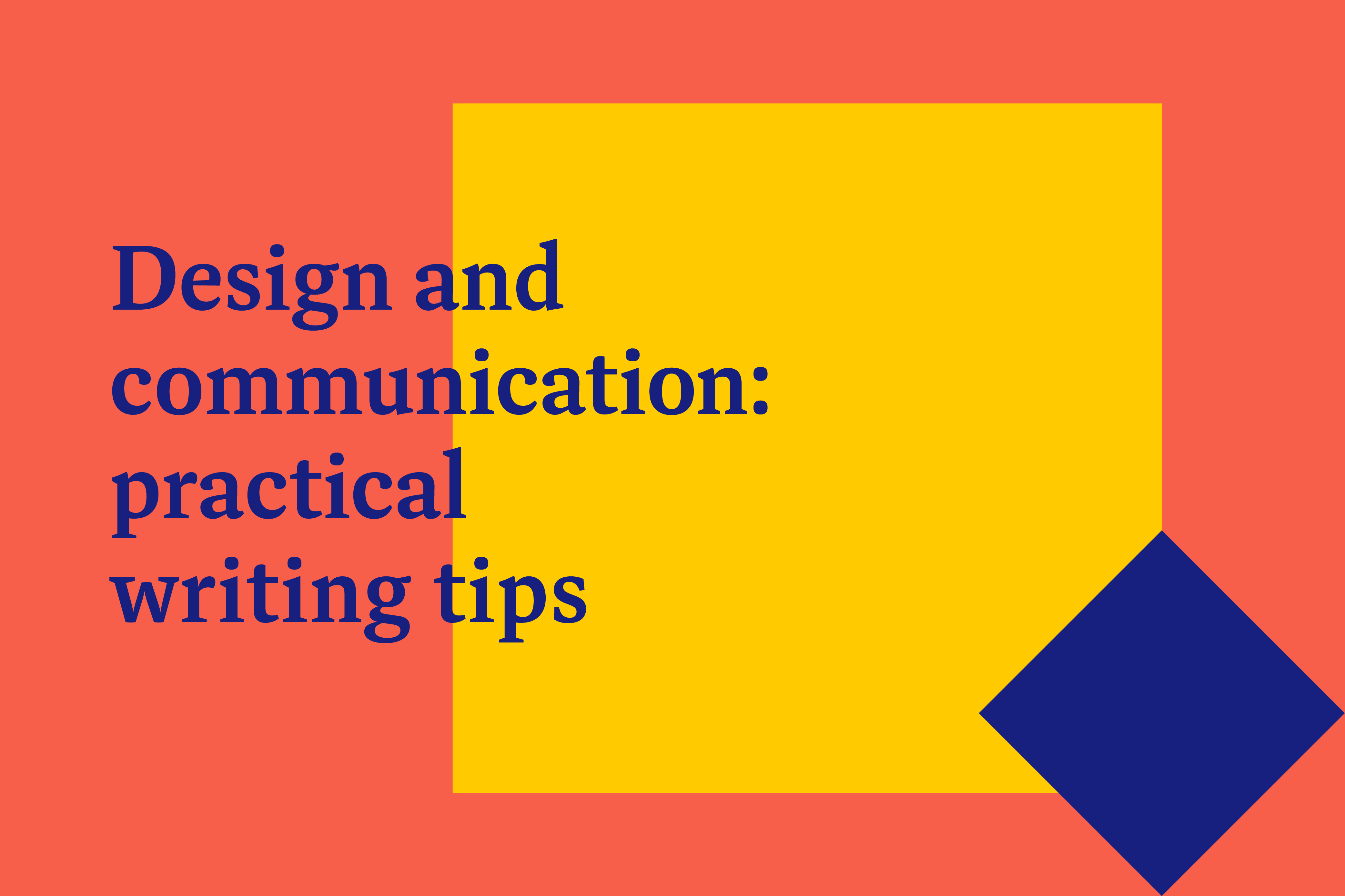In the previous article, I wrote about articulation of design through words. Now I want to give you practical tips for how to coherently write about your visual designs. Because throughout your career, you're going to spend way more time writing than you ever thought you would. You'll need to write emails, job applications, funding applications, pitches, proposals, portfolios. Writing, with practice and principles in place, will become second nature, if you try to keep these things in mind.
1. Less is more
There's a quote attributed to Mark Twain, "I apologise for writing you such a long letter. I didn't have time to write a short one." There is nothing more time-consuming for a writer than condensing high-level details into something short and snappy. But, think about the people reading your writing; they're time-poor. If you're applying for jobs, grants, anything, you're one of possibly hundreds of applicants all writing. All to be read. You'll stand out by keeping everything succinct.
2. Brief doesn't mean boring
Brief means succinct and clear, and it also means respect; keeping your writing brief shows you're respectful of everyone's time who's reading your words. It also shows a level of confidence that you're not trying to fill words or space for the sake of it. You can, of course, use emotive language, because design is, ultimately, emotionally-driven. But brevity is your friend, especially when explaining intangible emotional rationale.
3. One point per slide
When you're creating a deck, whether for pitching or presenting, make sure you stick to one point per slide. This helps to keep the reader interested and doesn't overload them with information. (There will be another article discussing tips to improve your verbal articulation.) It's also important not to include everything in your slide; keep your written content top level, and elaborate in your speaker's notes.
4. Don't be afraid of bullet points
This can sometimes be controversial, but bullet points aren't always the enemy. They can come in extremely handy when you're listing things out, particularly if you're asking for specific information or highlighting actions you (or someone else) will take. Make sure if you're using bullets that you categorise them properly, and keep each bullet short. A bullet point should be no longer than two lines long.
5. Format your writing
Bullets are only one traditional way of formatting. Another way to format is through the use of different font sizes and weights. Use headings to draw the eye, and format those as larger and bolder than your body copy. This will primarily come into play on your website, or any blogs or thought leadership pieces you might write. Don't forget, if you're replying to an email, you can format your font in different colours to draw the eye.
6. Answer the question being asked
When applying for grants, funding, or opportunities, make sure you answer the question you're being asked. Include the key terms or phrases mentioned in the question, and elaborate where needed. While you might think there's loads you want to say, don't - stick to the question at hand. Adding extra information that isn't required at this point can make it appear as if you haven't understood what you're being asked.
7. If in doubt, read it aloud
Reading your writing aloud allows you to get a sense of the speed and rhythm of your writing. It gives you an idea of how other people perceive it, and whether or not it trails off or loses focus. It's a helpful way of putting yourself into your readers' shoes, and often you'll spot things that you had previously overlooked. It's also a great way to see if your sentences are too long. It's also a nice way to practice your presentation skills, and get used to speaking clearly and at a nice pace.
These might seem like obvious things, but keeping a consistent habit of following the above will help you to elevate your writing skills. And, as you'll see in the next article, writing will help your spoken articulation, too. Because everything you'll say, will need to be written first.
